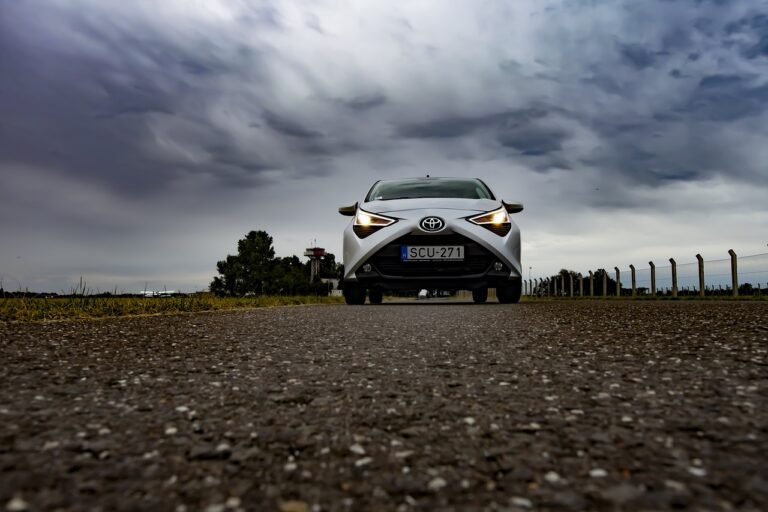Addressing Cybersecurity Risks in Autonomous Vehicles: Strategies and Best Practices
cricbet.99, sky1exchange, cricbet99 reddy anna:As technology advances, the prospect of autonomous vehicles becoming a fixture on our roads is becoming increasingly realistic. While the promise of these self-driving cars is exciting, there are serious concerns about the cybersecurity risks they pose. A secure autonomous vehicle ecosystem is crucial to ensuring the safety of passengers, pedestrians, and other road users. In this article, we’ll explore strategies and best practices for addressing cybersecurity risks in autonomous vehicles.
Understanding the Risks
Autonomous vehicles rely on a complex network of sensors, cameras, and software to navigate the roads safely. These systems are vulnerable to cyber attacks that could compromise the vehicle’s operation and put lives at risk. Hackers could potentially take control of a self-driving car, leading to accidents or other dangerous situations.
One of the biggest cybersecurity risks in autonomous vehicles is the threat of remote hacking. Hackers could exploit vulnerabilities in a vehicle’s software to gain control of critical systems, such as steering, brakes, and acceleration. This could have devastating consequences, leading to accidents, injuries, and even fatalities.
Another concern is the potential for data breaches. Autonomous vehicles collect and store vast amounts of data, including information about the vehicle’s location, speed, and surroundings. This data is valuable to hackers, who could use it for malicious purposes such as identity theft or extortion.
Strategies for Mitigating Cybersecurity Risks
To address cybersecurity risks in autonomous vehicles, automakers, regulators, and cybersecurity experts must work together to implement robust security measures. Here are some strategies for mitigating these risks:
1. Secure the supply chain: Automakers should work with their suppliers to ensure that components used in autonomous vehicles are secure and free from vulnerabilities. Supply chain security is crucial to preventing cyber attacks that could compromise the vehicle’s systems.
2. Implement secure software development practices: Developers should follow best practices for secure software development, such as using encryption, authentication, and access controls to protect against cyber threats. Regular security audits and testing can help identify and fix vulnerabilities before they can be exploited.
3. Use over-the-air updates: Over-the-air software updates allow automakers to quickly patch security vulnerabilities and deploy new features without the need for physical intervention. This can help protect autonomous vehicles from cyber attacks by ensuring that their software is always up to date.
4. Encrypt data in transit and at rest: Encrypting data can help protect sensitive information from interception or theft. Autonomous vehicles should use secure protocols to encrypt data in transit between the vehicle and external systems, as well as at rest in onboard storage.
5. Implement intrusion detection systems: Intrusion detection systems can monitor the vehicle’s network for unusual activity that could indicate a cyber attack. These systems can help detect and respond to security incidents in real-time, minimizing the impact of a breach.
Best Practices for Cybersecurity in Autonomous Vehicles
In addition to these strategies, there are several best practices that automakers and other stakeholders can follow to improve cybersecurity in autonomous vehicles:
1. Conduct regular security assessments: Regular security assessments can help identify and address vulnerabilities in a vehicle’s systems before they can be exploited by hackers. These assessments should include penetration testing, code reviews, and vulnerability scans.
2. Educate employees and users: Employees and users of autonomous vehicles should be educated about cybersecurity best practices, such as using strong passwords, avoiding phishing scams, and reporting suspicious activity. Training programs can help raise awareness of the importance of cybersecurity in autonomous vehicles.
3. Establish incident response plans: In the event of a cyber attack, automakers should have an incident response plan in place to quickly and effectively respond to the breach. This plan should outline roles and responsibilities, communication protocols, and steps for containing and mitigating the attack.
4. Collaborate with industry partners: Cybersecurity is a collective effort that requires collaboration between automakers, regulators, cybersecurity firms, and other stakeholders. By sharing threat intelligence and best practices, industry partners can work together to strengthen the security of autonomous vehicles.
5. Continuously monitor and update security measures: Cyber threats are constantly evolving, so it’s important to regularly monitor and update security measures to protect autonomous vehicles from new and emerging risks. Automakers should stay informed about the latest cybersecurity trends and technologies to ensure that their vehicles are adequately protected.
FAQs
Q: Are autonomous vehicles more susceptible to cyber attacks than traditional vehicles?
A: Autonomous vehicles are more complex and interconnected than traditional vehicles, making them potentially more vulnerable to cyber attacks. However, with the right security measures in place, autonomous vehicles can be made just as secure as traditional vehicles.
Q: Can hackers take control of a self-driving car remotely?
A: While remote hacking of autonomous vehicles is theoretically possible, it’s not easy to pull off in practice. Automakers are constantly improving their security measures to prevent such attacks, but it’s important to remain vigilant and proactive about cybersecurity.
Q: How can consumers protect themselves from cyber threats in autonomous vehicles?
A: Consumers can protect themselves by choosing reputable automakers that prioritize cybersecurity, keeping their vehicle software up to date, and being mindful of what information they share with their vehicle.
In conclusion, addressing cybersecurity risks in autonomous vehicles requires a multi-faceted approach that involves collaboration between automakers, regulators, and cybersecurity experts. By implementing robust security measures, following best practices, and educating stakeholders, we can ensure that self-driving cars are safe and secure for all road users. By staying informed and proactive about cybersecurity, we can help realize the full potential of autonomous vehicles while minimizing the risks they pose.







